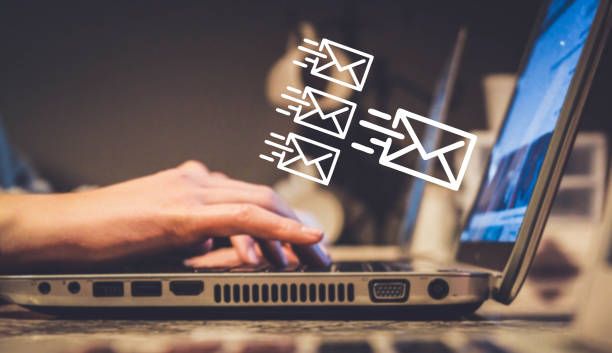In today's digital world, unwanted and spam emails have become an ongoing nuisance for email users. These unsolicited messages not only clutter our inboxes but also pose security risks and can be a major productivity drain. However, there are effective strategies and techniques you can employ to bounce unwanted email and combat spam effectively. In this comprehensive guide, we will explore the best practices, expert tips, and frequently asked questions surrounding the topic. With these insights, you can enhance your email security, regain control over your inbox, and enjoy a more streamlined digital communication experience.
Understanding Unwanted Email and Spam

- Defining Unwanted Email: Unwanted email refers to messages that are unsolicited, irrelevant, or unwanted by the recipient. These emails can range from promotional offers and newsletters to phishing attempts and malicious content. By bouncing unwanted email, you can send a clear message to the sender that their messages are not desired or welcome.
- Identifying Spam: Spam email refers specifically to unsolicited and bulk messages that are sent indiscriminately to a large number of recipients. These emails often contain advertisements, scams, or malicious content. It is essential to distinguish spam from legitimate messages and employ effective strategies to prevent spam from overwhelming your inbox.

Bouncing Unwanted Email: Strategies and Techniques

- Utilizing Email Filters and Spam Protection: Most email providers offer built-in spam filters and protection mechanisms. Take advantage of these features and enable them to automatically identify and redirect unwanted email to your spam or junk folders. Regularly review these folders to ensure legitimate emails are not mistakenly marked as spam.
- Unsubscribe and Mark as Spam: When receiving unwanted email from legitimate sources, such as newsletters or marketing campaigns, utilize the "unsubscribe" option provided in the email footer. This action helps remove your email address from their mailing lists. Additionally, mark such emails as spam to train your email provider's filters to recognize similar messages in the future.
- Implementing Advanced Email Security Solutions: Consider using advanced email security solutions or third-party spam filters to enhance your email protection. These tools utilize sophisticated algorithms and real-time threat detection to identify and block unwanted and malicious emails before they reach your inbox.
- Sender Blacklisting and Whitelisting: Take advantage of sender blacklisting and whitelisting features offered by your email provider or third-party email management tools. Blacklisting allows you to block specific email addresses or domains associated with unwanted email. Conversely, whitelisting enables you to specify trusted senders and ensure their emails bypass spam filters.

Expert Tips for Effective Bouncing of Unwanted Email

- Exercise Caution with Unknown Senders: Avoid opening emails from unknown senders, especially if the subject line appears suspicious or if the email content contains unexpected attachments or links. Instead, delete such emails or bounce them back to the sender without opening them to reduce the risk of malware or phishing attacks.
- Be Wary of Unusual Requests: Phishing emails often trick recipients into divulging sensitive information or performing harmful actions. Be cautious of emails requesting personal or financial details, login credentials, or urgent actions. When in doubt, bounce the email or contact the purported sender through a trusted channel to verify the authenticity of the request.
- Regularly Update and Maintain Security Software: Keep your operating system, email client, and security software up to date with the latest patches and updates. Regularly scan your computer for malware or viruses that may compromise your email security. This proactive approach helps mitigate the risk of unwanted email and other cyber threats.
- Educate Yourself and Stay Informed: Stay informed about current email security threats and evolving spamming techniques. Educate yourself on common phishing tactics, such as deceptive links, spoofed email addresses, and social engineering methods. By staying vigilant and informed, you can better protect yourself from unwanted email and potential scams.
Frequently Asked Questions
Q1: How can I differentiate between legitimate emails and spam?
A1: Legitimate emails typically come from known senders, contain personalized content, and are relevant to your interests or activities. On the other hand, spam emails often have generic greetings, suspicious subject lines, or contain unsolicited offers. Be cautious when opening emails from unknown senders or if the content seems too good to be true.
Q2: Can bouncing unwanted email stop future spam messages?
A2: Bouncing unwanted email can discourage senders from continuing to send messages to your address. However, it is not a foolproof method to eliminate all spam. Combining bouncing techniques with other proactive measures, such as email filters and security solutions, offers a more comprehensive approach to reducing spam.
Q3: Is it necessary to notify the sender when bouncing an email?
A3: Notifying the sender when bouncing an email is not necessary, as the bounce message is automatically generated by the email server. However, if you wish to explicitly convey your preference to stop receiving emails from a particular sender, you can consider sending a separate email requesting them to remove you from their mailing list.
Q4: Are there legal implications of bouncing unwanted email?
A4: Bouncing unwanted email itself does not have any legal implications, as long as it is done within the boundaries of applicable laws and regulations. However, it is important to understand and adhere to the spam laws of your jurisdiction to avoid any potential legal issues.
Conclusion
Bouncing unwanted email is an effective strategy to combat spam and regain control over your inbox. By implementing the strategies and techniques discussed in this comprehensive guide, you can reduce the influx of unwanted and spam emails, protect yourself from potential security risks, and enjoy a more streamlined digital communication experience. Remember to employ a multi-layered approach by utilizing email filters, security software, and advanced spam protection tools to enhance your email security. Stay informed, exercise caution, and regularly update your knowledge to stay one step ahead of spammers. With these proactive measures, you can reclaim your inbox and focus on what matters most.

